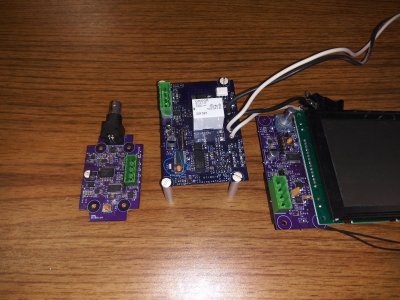This is pretty intriguing, as long as the monitor doesn't end up sending an inhibit signal to both heater control loops simultaneously, which requires coordination between the heater elements as well. With simple logic, this could be avoided, but if we are using a simple logic signaling all it takes is a stray salt crystal to pull the inhibit or run line up or down and ruin our day.
I was thinking along the line of a simple but robust signal line. Use a latching relay double pole in the monitor. Those are generally very good about not being able to get caught between states. Then make the signal 20mA at 12V. You can use the second pole to drive a simple logic circuit so that the monitor just has to generate a pulse to switch. It doesn’t even need to know which heater is active, therefore it can’t forget. It’s action is to click the relay which changes the sides. Then just pay attention to signal separation and potentially use conformal coat on the boards. RTV around the base of connectors also helps keep the bad stuff out. Each heater module would have an independent power supply, the monitor would have no power supply, but would be fed from the two heater supplies diode OR’d together.
I have always used the two coil latching relays. I think there are single coil ballpoint pen types out there that change state with each pulse. I have no idea if they are considered as reliable.


















